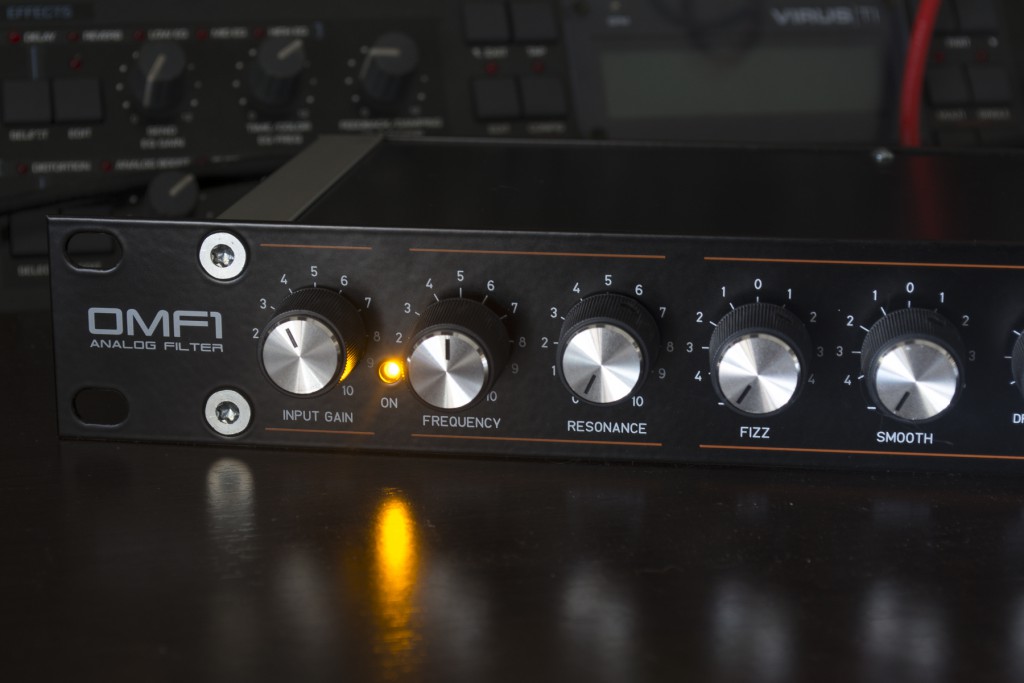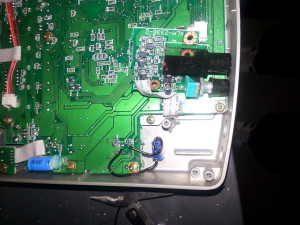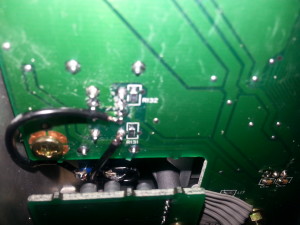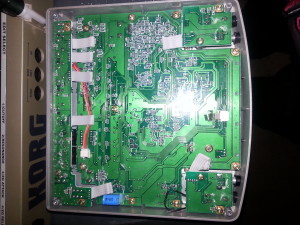
Radikal Technologies takes DELTA CEP A paraphonic semi-modular synth several steps further forward with free firmware updates
MÜNCHEN, GERMANY: cutting-edge sound specialist Radikal Technologies is proud to announce availability of the latest (Version 1.6e) firmware update for its illustrious DELTA CEP A paraphonic semi-modular synthesizer — serving up nine essential synthesis ‘modules’ melded together to form a potent yet straightforward starting point to the ever-widening world of the Eurorack small-format modular system — that builds upon its impressive feature set with several significant additions, free for existing owners…
Its introduction earlier this year to widespread critical acclaim saw Radikal Technologies’ DELTA CEP A living up to the PARAPHONIC-MODULAR wording boldly blazoned across its feature-packed front panel. Pushing its cutting-edge sound-specialising creator’s product lineup to the forefront of the ever-widening world of the Eurorack small-format modular system, the deftly-designed DELTA CEP A can function as a standalone synthesizer or — when removed from the chassis — a 68HP-occupying Eurorack module forming the centre of a powerful modular voice. Whichever way it is brought into play — purchasable as a desktop paraphonic semi-modular synthesizer or Eurorack paraphonic semi- modular synthesizer module, the DELTA CEP A is the perfect starting point for any modular user.
Today, the DELTA CEP A paraphonic semi-modular synthesizer represents an even more potent force in the ever-widening world of the Eurorack small-format modular system, thanks to extensive firmware updates, culminating in Version 1.6e, that build upon its impressive feature set with several significant additions, as follows.
Firstly, Radikal Technologies has helpfully seen fit to expand the DELTA CEP A’s already powerful FX section above and beyond the giveaway (FX: 1. TAPE 2. DELAY 3. CHORUS 4. PHASER 5. FLANGER) wording highlighted on that feature-packed front panel to additionally include a stereo reverb algorithm. As such, it is now perfectly possible to add stereo reverb to those tape, delay, or chorus effects, for instance. It is also perfectly possible to morph those new reverb parameters as well with the INTERPOLATOR section — certainly separates the DELTA CEP A from the Eurorack pack! Put it this way: with this sound-stimulating section, users are afforded an ability to store so-called ‘snapshots’ of sound creations into the DELTA CEP A’s internal memory; moreover, users can consequently play those snapshots sequentially, creating cool sonic sequences. Saying that, they can cleverly create smooth transitions from one snapshot to another, allowing for some stunning sound morphing effects!
Excitingly, the LFO 1 section can now be assigned to different modulation targets without having to use any patch cables; creatively, this allows for assigning the LFO (Low Frequency Oscillator) modulation to multiple targets simultaneously with independent modulation depths for all targets. That said, the ADSR section’s envelope generator can also now be assigned to different modulation targets without having to use any patch cables; creatively, multiple targets can be simultaneously controlled with independent modulation depths. Deeper still, the INTERPOLATOR section’s already powerful morphing function also benefits from those new routing capabilities since internal routings can be morphed! Musically- and sonically-speaking, users can now explore a whole new dimension of dynamic soundscapes.
So, having installed its latest firmware updates, how do discerning DELTA CEP A users access those welcomed additional parameters? Pressing the SHIFT button locks the SHIFT function to more easily enable additional parameters; its associated LED (Light Emitting Diode) flashes until theSHIFT function is unlocked again (by pressing the SHIFT button again).
Additionally, the MOD input in the MIXER section now controls the volume and saturation of the SWARM OSC signal; speaking of inputs, the SYNC input in the LFO 1 section now performs perfectly and allows for synchronising the LFO to another LFO or the GATE signals. (Holding theSHIFT button allows access to the note values of the LFO with the SPEED knob.)
Needless to say, the DELTA CEP A now reacts to MIDI (Musical Instrument Digital Interface) program changes, but be careful; if it receives a program change while the user is editing a sound, any changes to the sound will be lost.
Last, but by no means least, thanks to the latest (Version 1.6e) firmware update, it is now possible to share presets directly between two DELTA CEP A paraphonic semi-modular synthesizers. So what else can Radikal Technologies say? Not much — other than concluding that its illustrious DELTA CEP A has taken several significant steps further forward, courtesy of a rigorous regime of firmware updates. Ultimately, then, the DELTA CEP A ships with the latest firmware, which existing users of course can access and install for free.
The DELTA CEP A is available for purchase — priced at an RRP of €899.00 EUR/$999.00 USD (Eurorack) and €1,198.00 EUR/$1,298.00 USD (desktop) — through Radikal Technologies’ growing global network of authorised dealers.
For more in-depth information and access to the latest firmware updates, please visit the dedicated DELTA CEP A webpage here: https://www.radikaltechnologies.com/delta-cep-a-2/ (Existing DELTA CEP A owners can download the latest firmware updates for free.)
Watch Radikal Technologies Product Designer Jörg Schaaf’s sonically-stimulating DELTA CEP A video playlist here:https://www.youtube.com/watch?v=_YkvgTVZQ3E&list=PLysQPMsmJseFLtTQxGL9tJROrferQtfLs





 once you have located the placement of the switch wires to make a path for the switch. remove the microphone input board gently.
once you have located the placement of the switch wires to make a path for the switch. remove the microphone input board gently.
 Usiing a Dremel tool make a whole where you want the switch keeping in mind that you need to keep the switch close to the main board so that you don’t hit the capacitors when you reinstall the microphone board.
Usiing a Dremel tool make a whole where you want the switch keeping in mind that you need to keep the switch close to the main board so that you don’t hit the capacitors when you reinstall the microphone board. Solder the wiring one leg to each side of the switch. be careful not to over heat the board. If possible bend away any tabs that might come in contact with the microphone board to prevent shorts
Solder the wiring one leg to each side of the switch. be careful not to over heat the board. If possible bend away any tabs that might come in contact with the microphone board to prevent shorts Reinstall the microphone board and put all the screws back in place. you are now ready to have fun !
Reinstall the microphone board and put all the screws back in place. you are now ready to have fun !